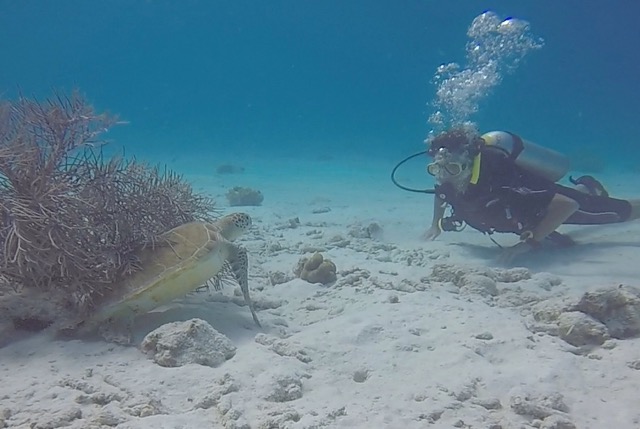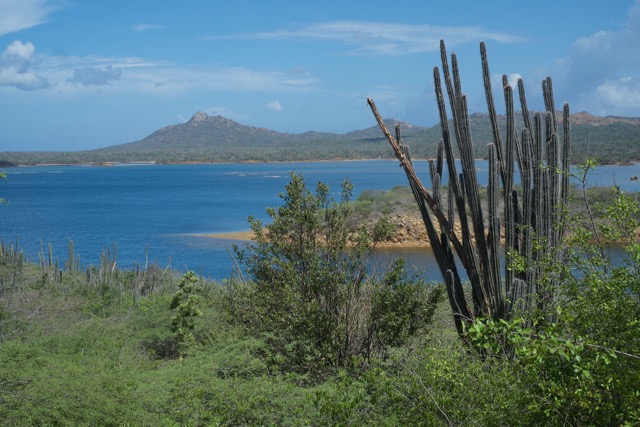Colombia

Vega
Hugh and Annie
Tue 27 Sep 2016 22:17
| In the last post we had decided to leave Curaçao ahead of a deep depression that is forecast to affect the southern and central Caribbean this week. When it came to the intended early morning start on Saturday we were still prevaricating and missed the chance of an overnight anchorage in Aruba if conditions warranted. Nevertheless the forecast for the days ahead didn’t look too bad so we still had the options of either hunkering down in Curaçao to await our fate or head off into one of the reputed most difficult sailing areas of the world around the top of Colombia (high winds and big seas). I think I mentioned in a previous post that the American cruisers in particular use weather forecasts produced by a guy in Florida called Chris Parker. It is his forecasts that give all the technical details about atmospheric conditions. I therefore emailed him for any advice he could give on what we should do and lo, within an hour, he replied to say that if it was his decision he would leave the ABC Islands and head for Colombia. He included a synopsis of the weather conditions likely en route. So, having feared that he might give a completely non-committal answer, we rejoiced at some sound advice and set off that afternoon.Thank you Chris! We have now reached Colombia and are anchored in the Cabo de la Vela where the wind, at over 30kts, is stronger that it has been at any time in the passage across! We are hoping it dies down while we are here at anchor overnight. The passage has been steady with 15 to 20 knot easterly wind, clear skies and wonderful starlit nights. As ever we had the mainsail with two reefs and preventer as standard fare and put out the pole for the genoa. One night we needed to gybe and left the genoa attached to the pole on the same side as the mainsail, rather than gybe the pole also. This seemed to work and prevented the genoa from repeatedly collapsing and filling behind the mainsail. After a while it occurred to me that having the pole and the boom on the same side of the mast might put undesirable sideways pressure on the mast. However, the wind was not strong at the time and we left the pole as it was. I must ask a rigger or sailmaker (or anyone out there) whether having the two on the same side is bad practice. Having got you as far as Colombia it will have occurred to you of course that we haven’t posted very much about our adventures in Bonaire and Curacao. In fact I don’t think Annie has posted anything since Grenada yet so I will give you a few highlights just to whet your appetite before Annie emerges from her blogging lethargy. Oh and by the way, on the technical front I think the engine drive is much smoother at higher revs than before Grenada Marine realigned the tube for the prop shaft. They seem to have been right. Also I have fitted the new AIS! The good news is that it works perfectly in receive mode. The bad news is that it won’t pick up a GPS signal and transmit our position. I think this is because we had to cut the end connector fitting off the cable from the GPS antenna in order to feed the cable through the proprietary hollow tube in the pushpit and into the boat interior. Even though the cable was re-joined by a local professional we may have damaged the connector in the process. So, a very expensive way to have exactly the same system as the one we have replaced - at least until I can source a new connector and/or cable in the UK. I am sure, however, that the new AIS is picking up commercial AIS transmissions from much farther away than the old system i.e. from up to 30 miles rather than about 10. Can this be?! Bonaire - the combined might of Peter at Budget Marine and Axel at Bonaire Yachting Services failed to find anything wrong with the outboard. Peter just couldn’t start it, suspecting a fuel flow problem (as, for what it is worth, had I) but for Axel it started first time and has run flawlessly ever since. He cleaned through the fuel system for good measure and I have bought an external and larger capacity fuel tank that should by-pass any problem areas and save having to refill the small internal tank every five minutes. It was, however, quite amusing in the absence of a fuel gauge just to just wait until it ran out and refill on the hoof as and when required. The diving in Bonaire is absolutely wonderful and I have enough GoPro footage to make a small movie and entertain anyone that has the stamina when we get back. If there is good enough wifi in Santa Marta I will put a taster onto Facebook. Curacao - disappointing on the whole. Bonaire is quite flat and bleak in some ways but interesting, good vibes, very unspoilt with tasteful housing and time share developments. Curacao is much more developed, huge commercially and industrially by comparison, tatty sprawling development around the south of the island and lots of gated housing and resorts. It does have redeeming elements that one day Annie may describe. And finally (for this issue) we have realised why we are unable to route plan using Navionics charts on Annie’s iPad without a wifi connection. The iPad doesn’t have an internal GPS! Can you believe that? The Caribbean charts are still a good reference but I think I now understand what Mike Peel told me about some kind of external dongle for an iPad. In fact I do have one for a laptop but as an iPad has no USB ports that is not a solution. Every smartphone is built around a GPS receiver - why not an iPad?!!      |